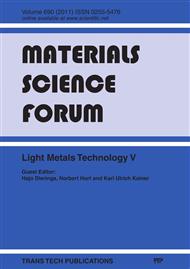p.246
p.250
p.254
p.258
p.262
p.266
p.270
p.274
p.278
Development of Advanced and Free-Machining Titanium Alloys by Micrometer-Size Particle Distribution
Abstract:
The chip formation process of four different titanium alloys has been studied in several cutting experiments. Alloys containing more than 50% of a-phase at room temperature and aged metastable b-alloys form segmented chips independent of the cutting conditions. Solution treated metastable b-alloys show a cutting parameter dependent change from continuous to segmented chip formation. Lanthanum has been added to all four alloys. The microstructure of these alloys consists of a titanium matrix and micrometer-size particles. The presence of grain boundary particles leads to enhanced grain stability at elevated temperatures. In addition, short chips are observed during metal cutting only in case pure metallic rare-earth metal particles are present.
Info:
Periodical:
Pages:
262-265
Citation:
Online since:
June 2011
Price:
Сopyright:
© 2011 Trans Tech Publications Ltd. All Rights Reserved
Share:
Citation:


